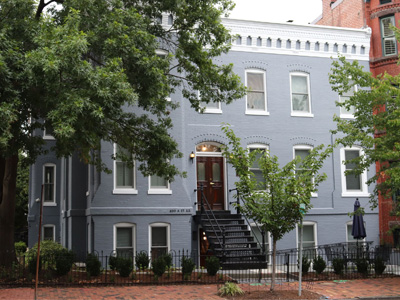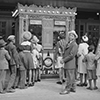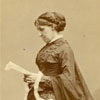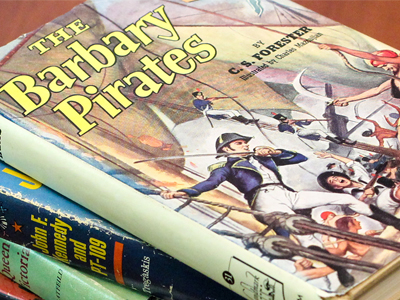 There is no “happily ever after” in history. Historians study the spectrum of human experience, but so much of history includes an undercurrent of sadness, even heartbreak. War, enslavement, genocide, pandemic—many of the most popular topics in history are those that at their core involve pain, violence, and death. And with history, there is no ending. Even when the book ends, there is something more that comes after.
There is no “happily ever after” in history. Historians study the spectrum of human experience, but so much of history includes an undercurrent of sadness, even heartbreak. War, enslavement, genocide, pandemic—many of the most popular topics in history are those that at their core involve pain, violence, and death. And with history, there is no ending. Even when the book ends, there is something more that comes after.
But a happily ever after is a requirement in a romance novel. The HEA, as it’s known among romance writers and readers, is one of two essential components to how the Romance Writers of America defines a romance; the other is that love must be central to the story.
Reading romance novels has become my favorite pandemic distraction. The criticism most often lobbed at the genre—that it’s light, formulaic, predictable—makes it perfect for COVID-era reading. And as a historian, I have embraced the fun of historical romance novels. What? you may be thinking. Those books with Fabio on them? Well, yes. But the genre has come quite far since the derogatory label “bodice ripper” was coined. Authors and the stories they tell are much more diverse. Today, you can read about Beverly Jenkins’s Black cowboys (and cowgirls) in the American West, Alyssa Cole’s Civil War spies, and Courtney Milan’s Chinese-descended duke in Victorian England. The women aren’t just waiting around to be married. There are books about women scientists, suffragettes, and sex workers. Authors such as Cat Sebastian and KJ Charles offer LGBTQ+ stories set in the past. And it’s not all dukes—though the genre includes exponentially more dukes than have existed in English history. From Joanna Shupe’s self-made Gilded Age robber barons to Sarah MacLean’s gangs in London’s Covent Garden, you’ll find stories now that take place far from the ballrooms and country estates.
To some, this might sound like absurd historical fantasy. And yet romance authors do research (both primary and secondary) into their subjects. Many include an author’s note or bibliography at the end to document their research and identify the factual precedents for their story. While reading a Beverly Jenkins novel set in the American West, I recognized exactly which scholarship she leaned on to write about racialized sexual violence after the Civil War. And trained scholars write in this genre: historian Katharine Brophy Dubois (Duke Univ.) uses the pen name Katharine Ashe, while Shakespeare scholar Mary Bly (Fordham Univ.) is the very popular Eloisa James.
When we list the ways that history reaches the public—popular nonfiction, documentaries, podcasts—the focus is often on the so-called “dad history.” Books on the Founding Fathers, American Civil War, and World War II that reach a popular audience sell far better than most historical monographs. And yet I propose that we think, too, about romance novels. Few would think of its readers as “history buffs,” but romance is a billion-dollar industry, and historical romance is one of its most popular subgenres. A dedicated Regency romance reader, for example, can tell you in detail about the courtship rituals, gaming clubs, fashions, and hobbies of both sexes in London during this era. And they recognize when an author has not done their research—an art historian friend was recently displeased to find stereoviews in a book set a decade before the camera was invented.
But historical romance novels, and romance more broadly, offer more than facts about the past. If you pick one up, you’ll find relatable stories about people with rich emotional lives. These novels may include dangerous scenarios and life-threatening illness, and there will be major obstacles the couple must overcome to be together. But by the end, you know that the characters will live happily ever after. When history is full of so much suffering, these books remind me that, across time and geographies, human connection remains one of the most important parts of our lives.
Laura Ansley is managing editor at the AHA. She tweets @lmansley.
Tags: From the Editor Cultural History Women, Gender, Sexuality

This work is licensed under a Creative Commons Attribution-NonCommercial-NoDerivatives 4.0 International License. Attribution must provide author name, article title, Perspectives on History, date of publication, and a link to this page. This license applies only to the article, not to text or images used here by permission.
The American Historical Association welcomes comments in the discussion area below, at AHA Communities, and in letters to the editor. Please read our commenting and letters policy before submitting.
Comment
Please read our commenting and letters policy before submitting.










